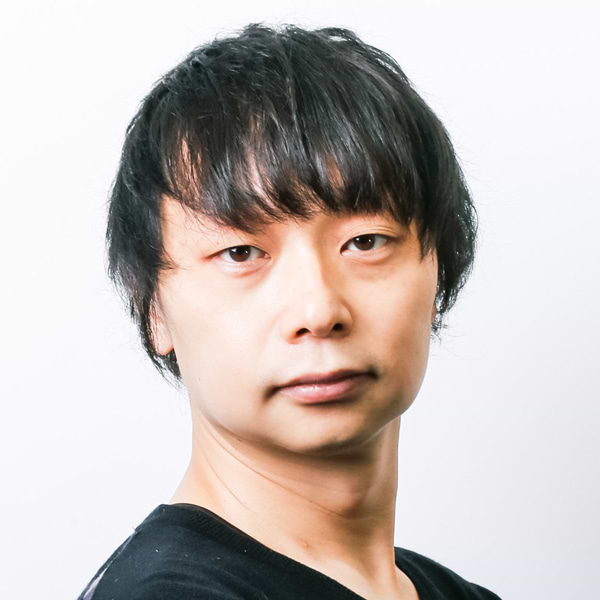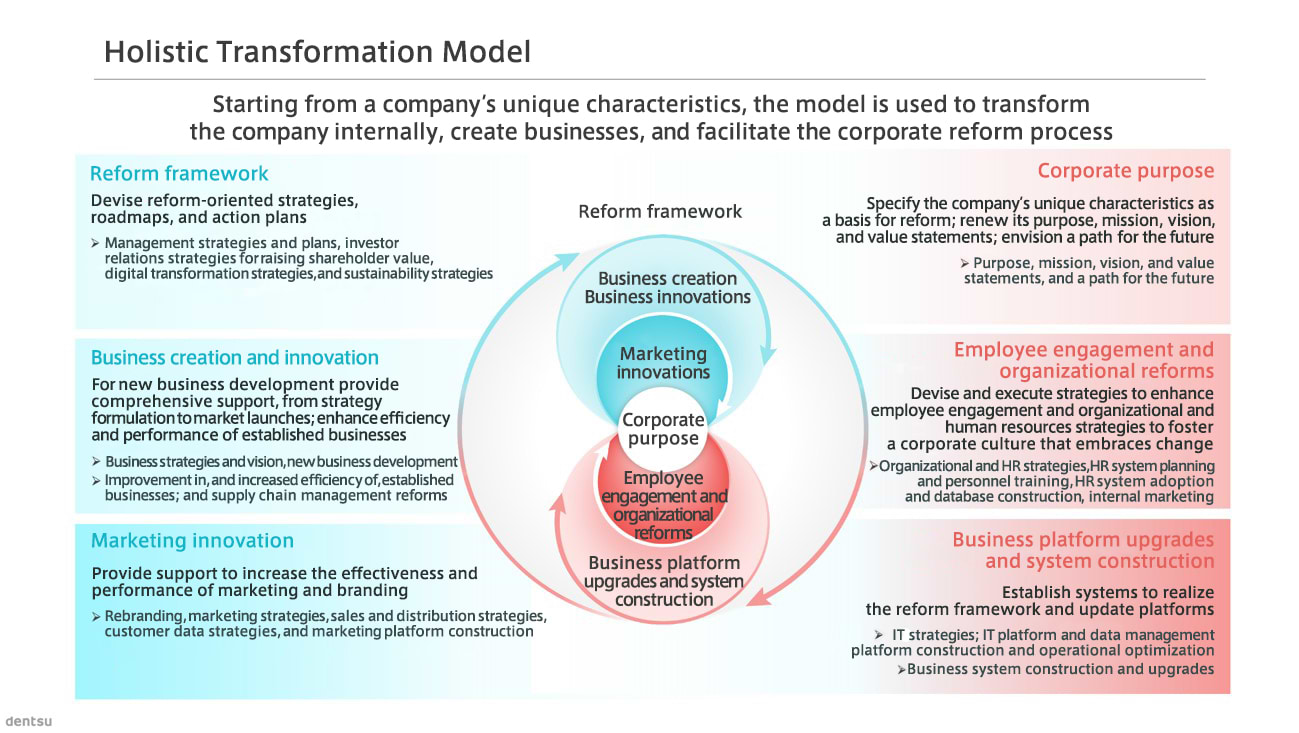
Shingo Yamahara
Business Transformation Division 2
Managing Director
When corporate managers in Japan consult with us, they often raise one issue in particular: the companies they lead are not creating new value or making major advances.
This is even the case when their companies employ many talented people, actively recruit personnel with the latest capabilities, and have industry-leading intellectual property, expertise, and networks. For some reason, the enterprises tend to be disrupted by outside businesses. The managers want to know why their companies cannot generate such innovations internally.
We in Dentsu’s Business Transformation divisions are tackling a wide range of issues relevant to corporate reform and business innovation. We are helping organizations change, so that they can continuously create new value.
In this installment about business transformation, I will focus on our approach to this challenge.
Problems at the second stage of reform
Over the past several years, we have advised many Japanese companies after they have implemented reforms. They often tell us that, despite having created a corporate purpose statement, their company’s employees had not changed as expected. Or they mention that, despite having created the seeds for new business, the resulting enterprises had not grown into business pillars.
We have also been told that the earning capacity of these companies’ main businesses had not expanded, despite operations having been made more efficient through the use of digital technologies. The fact that the companies had not grown as expected was a major concern among many corporate managers.
The issues they raised are what we call second-stage reform problems. At this stage, corporate managers who have led the reforms face the task of having to channel the reform outcomes in the direction of their companies’ growth.

The results of the 2022 Dentsu survey of employee awareness regarding corporate reform in Japanese companies were insightful. The number of employees who play an active role in corporate reforms were shown to be fewer than management had expected.
The survey found that about 20% of all employees play an active role, while some 30% passively go along with the reforms. This suggests that the remaining 50% of the workforce have no real interest in corporate reforms, and offer no grounds for optimism.
The top reason employees gave for their lack of interest was that they did not know any specific way by which the goals could be achieved. Indicating their ambivalence and unease about reform, staff asked whether corporate reforms are intended to change their behavior.
This suggests that even when goals are specified clearly, they will not be widely shared or embraced by the workforce. Consequently, no matter how much management may try to lead the way, in reality, corporate reforms can hit roadblocks in the workplace or face a strong pull back to the status quo.
Corporate management shift: from excitement to resolve
Along with the above concerns, I believe that corporate managers have changed their tone in recent years. Before the COVID-19 pandemic, management in any given industry in Japan would often express a desire to do such things as create exciting new businesses.
Now, however, a growing number of managers simply are emphasizing their resolve to do such things. More specifically, prior to the pandemic, many Japanese companies had redefined and broadened their corporate purpose and identity statements, and had taken daring steps toward creating all-new businesses in markets largely unrelated to their main businesses. I think these trends were a source of the excitement that existed among corporate managers.
Now that those initiatives are no longer being considered, many Japanese companies are realizing that the seeds of their new businesses did not grow into business pillars.
As a result, instead of focusing on new businesses in unrelated markets, these companies are now inclined to reassess their long-established strengths and the sources of their R&D. They are going back to developing solid businesses in markets related to those in which they currently operate.
At the same time, the companies understand that new businesses will not develop into business pillars unless their corporate culture changes. I believe this is what is driving the resolve that corporate managers speak of today.
Motivating organizations
Given the recent trends mentioned above, the challenge is how organizational motivation can be increased to realize the outcomes of reform. In our view, if the value that a company creates does not change, the company’s corporate culture will not evolve. Moreover, unless all the company’s internal systems are improved, its new businesses will not succeed.
So it is vital that the organizational silos within the company be connected, and that its businesses be linked to its foundations if comprehensive reforms are to be pushed ahead.
Our approach is to: carefully determine the views and attitudes of employees; define concepts and a framework for the reforms and; formulate an action plan. It is essential that concepts and strategies be expressed in ways that are easy for anyone to remember—and talk about.
To create momentum in the company, steps must be taken to get employees involved in the reform process by initiating discussions among them. Also key is the need to review the company’s DNA and reflect it in the reform concepts and messages, thereby conveying what the company needs to change and what it continues to value.
By effectively creating a reform process and a narrative, which together resonate with employees, and repeatedly conveying them together with related actions, a company should be able to maintain employee enthusiasm for reform.
Holistic businesses transformation
Dentsu has created a Holistic Transformation Model to better grasp the issues involved in corporate reforms and business innovation. It is designed to facilitate efforts to take on challenges using the above approach.
Since we bring together professionals from several areas of expertise, the model may be used by any of our corporate clients.

This model is designed to increase the value companies provide to their customers by creating businesses and enhancing the value of their brands.
It also aims to raise employee satisfaction by increasing their engagement, making their jobs more meaningful, and setting up systems that help them develop.
In our view, organizational motivation can be increased and lead to growth if reform is promoted comprehensively, inside the company and with assistance from external partners.
Over 300 people specializing in business and digital transformation work at Dentsu Inc. (as of April 1, 2024). With backgrounds in a wide range of fields, these professionals combine their capabilities every day to help companies succeed with reforms.
If corporate reform and business innovation is to be achieved, it is vital that winning formulas and strategies be created and executed, deploying bold ideas, creativity, and production capabilities. The ability to devise systems that actually motivate people to act is also essential. These are the unique strengths of Dentsu’s business and digital transformation professionals.
Author

Shingo Yamahara
Business Transformation Division 2
Managing Director
Shingo Yamahara advises corporate managers on a wide range of business transformation issues, including the formulation of medium-term management strategies, the planning and execution of corporate reforms, and support for new business creation.
In 2022, he founded and continues to manage the Urban Future Design Unit, an organization involved in urban development and community revitalization, comprising members from across the Group.
